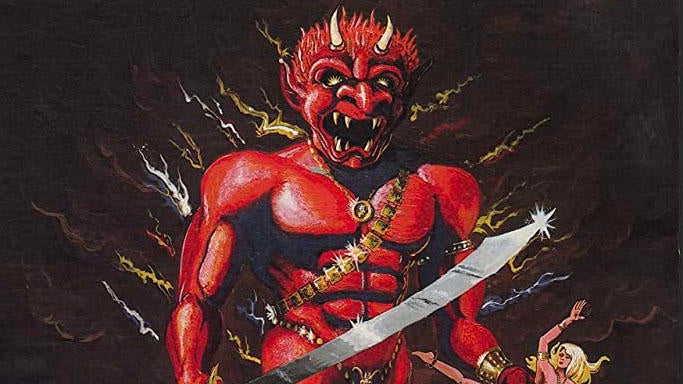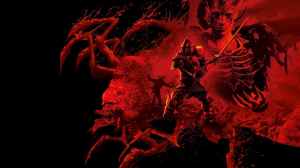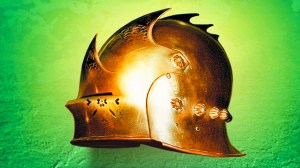So, you’ve seen Dungeons & Dragons: Honor Among Thieves and now want to give the game that inspired it a try? Luckily, there are a ton of resources out there to help! It’s probably never been easier to actually play Dungeons & Dragons, thanks to its current ruleset designed for ease of play and several relatively new tools meant to serve as an “on-ramp” for potential new players. While it might seem intimidating to play a tabletop roleplaying game for the very first time, designers have worked for decades finding the best ways to help players understand the basics of gameplay within a short period of time.
Videos by ComicBook.com
If you’re looking to play Dungeons & Dragons for the first time but want some advice on where to start or what you’ll need, just keep on scrolling for some handy tips on how to make your first game a success.
What IS Dungeons & Dragons?

Before we get started, we should probably explain the basics of Dungeons & Dragons. Dungeons & Dragons is a tabletop roleplaying game, a collaborative storytelling game where players sit around a table (either in-person or virtually) and tell a story together. One player is the Dungeon Master, who manages much of the framework of the story. They describe the basic scene, control NPCs and enemies, and make the final decision on rules interpretations. The other players each control a single Player Character, who are the heroes of their Dungeons & Dragons story. Each D&D player character (or PC) is mechanically defined by their class and race. Most of the time, players create their own player character by choosing a class and race before starting a D&D campaign and then bringing the character life by choosing a backstory and motivation for their character.
What Do I Need to Play Dungeons & Dragons?

If you’re playing in person, you’ll need two things – a set of polyhedral dice and your character sheet. A character sheet contains all the stats and abilities of your character and is usually filled out when starting a campaign for the first time either as part of a “Session Zero” (a planning session meant to get all the players of a TTRPG campaign on the same page to ensure a great experience) or on their own. There are several online resources that can help a player fill out a digital character sheet, including D&D Beyond.
Dungeons & Dragons uses a set of polyhedral dice to determine whether or not a character’s attacks and abilities are successful and how much damage they do in combat. Luckily, players can buy these dice at just about any game store or online. Seriously, just Google search for “D&D dice” and you’ll get a billion results. Make sure that the set includes a twenty-sided dice (a d20), a twelve-sided dice (a d12), two ten-sided dice (d10s), an eight-sided dice (d8), at least one six-sided dice (a d6) and a four-sided dice (d4).
How Many People Do I Need to Play Dungeons & Dragons?

Technically, you only need two players to play Dungeons & Dragons – one Dungeon Master and one other player. Ideally, the game is meant to be played with four player characters and a single Dungeon Master, although games can include even more player characters.
When determining whether or not you want to be a Dungeon Master, keep in mind that they are the de facto organizer and planner for the group. Dungeon Masters have to do a lot more work and prep than players, who typically only need to show up at the game ready to play. Dungeon Masters usually put in about an hour of preparatory work (reading or determining the adventure, preparing maps, pulling stat blocks for monsters players might encounter) for every hour they actually the game.
While it can be tempting to invite all your friends to play Dungeons & Dragons, keep in mind that a larger group means more potential scheduling conflicts. A running joke among D&D players is that the true enemy in Dungeons & Dragons is scheduling. Players will usually need to set aside two to four hours a session to play Dungeons & Dragons. It’s usually easier to set a specific time and day of the week to schedule your D&D session – folks who commit to that time are your players and folks who can’t commit can always participate as a “guest PC” who pops in to help every once in a while.
What Rulebooks Do I Need to Play Dungeons & Dragons?

There are a lot of rulebooks for Dungeons & Dragons, but players technically don’t need any in order to play! The Basic Rules for Dungeons & Dragons are widely available online and contain all the rules you need to play the game. If you are looking to invest in a physical rulebook, a player should pick up the Player’s Handbook, which contains the basic rules and additional character-building material and resources. A Dungeon Master should also pick up the Monster Manual (which contains monster and NPC statblocks to use in combat) and the Dungeon Master’s Guide (which contains different resources to help plan a campaign and build sessions).
As you continue to play Dungeons & Dragons, you may want to invest in different rulebooks like Xanathar’s Guide to Everything (which acts as an expansion of sorts for the core D&D rules) or Mordenkainen’s Tome of Foes (which contains more monster statblocks.) Almost every rulebook contains something for both players and DMs, although a lot of the books are primarily for DMs.
What’s The Best Adventure to Run for Dungeons & Dragons First-Timers?

Dungeons & Dragons publishes at least one full-length campaign a year that is intended to be a complete adventure from start to finish. There are several distinct advantages to using one of these campaigns over creating a campaign from scratch. A pre-written campaign requires a lot less time to prep than a self-made campaign, and there are usually a lot more resources for DMs to use (including pre-made maps, handouts, and other goodies, and online advice from other DMs who have run the campaign.)
If you are brand new to Dungeons & Dragons and are looking for an adventure to run, the “best” adventure is probably the Lost Mine of Phandelver, which is included in the Dungeons & Dragons Starter Set. Lost Mine of Phandelver is a relatively straightforward adventure that allows players to explore multiple plotlines in a relatively contained setting. It’s long been considered the gold standard for intro adventures in 5E, and it’s even being fleshed out into a longer campaign later this year by Wizards of the Coast.
An alternative adventure I like to use for newcomers is “The Sinister Secret of Saltmarsh,” which is a classic D&D adventure updated for the current edition in the Ghosts of Saltmarsh book published back in 2019. “Sinister Secret of Saltmarsh” is a Scooby-Doo style mystery in which players explore a haunted house at the edge of town to find the source of strange lights. I like this adventure because it subverts the expectations of what players expect from Dungeons & Dragons while maintaining an equal balance between combat, exploration and roleplay – the three pillars of D&D.
What Are the Most Important Rules to Remember in Dungeons & Dragons?

One of the biggest hesitations for many would-be players is a fear that they won’t be able to remember all the rules. While combat can be a bit finicky, most of the basic rules can be distilled to rolling a d20 whenever you need to make a check. If your DM asks you to “roll to attack” or “roll for Persuasion,” you simply need to roll a d20 and add your corresponding modifier from your character sheet.
Most of the other “rules” can be defined by following basic tabletop etiquette. Listen to the DM (who serves as the final arbiter for rules) and don’t argue when they make a ruling. Also, let players run their characters – while you can suggest a course of action during combat, you are ultimately only in charge of your own character and some players enjoy roleplaying what their character would do instead of making the optimal move.








